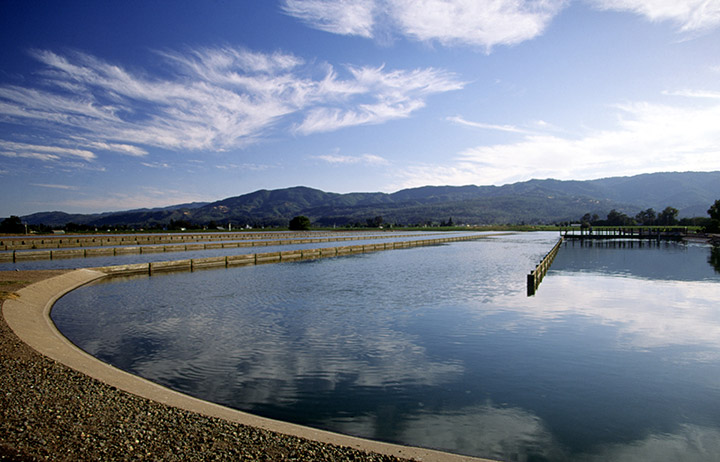DOE Announces Phase 1 Water Resource Recovery Prize Winners; Tees Up Phase 2

Today, the U.S. Department of Energy’s (DOE’s) Advanced Manufacturing Office announced the winners of Phase 1 of the American-Made Challenges® Water Resource Recovery Prize, a $1 million, two-phased competition designed to increase resource recovery from municipal wastewater treatment plants across the United States. Ten winners received up to $50,000 each and moved on to Phase 2, where they will have the chance to compete for two winning spots and $250,000 in cash prizes.
Part of DOE’s Water Security Grand Challenge, a framework to advance transformational technology and innovation to meet the global need for safe, secure, and affordable water, the prize is designed to solicit innovative, cost-effective water treatment technology system configurations and business plans that:
- Accelerate the recovery of valuable resources
- Lower the ultimate cost of small- to medium-sized water resource recovery facilities.
The competition is open to everyone and everything, ranging from wastewater treatment plants, to engineering and design firms, to technology developers, resource customers, and beyond.
In Phase 1, multidisciplinary teams submitted two high-level facility engineering schematics, a business case, and a technical description validating the potential for cost-effectiveness and viability of the resource recovery plan.
The proposed solutions addressed challenges such as:
- Reducing financial stress on municipal budgets
- Contending with the cost of disposal of residual biosolids
- Increasing the value of recoverable resources to offset the cost of recovery
- Advancing system-level energy efficiency.
“These 10 winners exhibit the best and brightest of American manufacturing ingenuity,” said Matthew Ringer, laboratory program manager for Advanced Manufacturing at the National Renewable Energy Laboratory. “These winning concepts could revolutionize tomorrow’s water treatment technology.”
As we look ahead to Phase 2, launching in summer 2020, let’s take a moment to get to know the Phase 1 champs and their winning designs:
- Sebastien Timans and Creg Criddle from Stanford University partnered with Ken Stedman of MicroMedia Filtration Inc. to submit Get it Fast, Get it Early: Extracting Solids from Wastewater to Maximize Energy Recovery, which uses microscreens and sand filters to separate solids early in the wastewater treatment process. The solids are dried and combusted to produce the steam and electricity needed to power the wastewater plant.
- The Road to Energy Neutrality, proposed by Mike Holland, Marcello Pibiri, Brent Perz, Carl Cacciatore, Marc van Dongen, and Chad Kuze, employs a combined heat and power unit, a solar photovoltaic system, and a micro-hydro generation system to enable Kishwaukee Water Reclamation District to reach its energy-neutrality goals by 2025.
- Resource Recovery with Supercritical Water Oxidization (SCWO), proposed by Kobe Nagar, Marc Deshusses, Simon Lobdell, and Mohammad Abu-Orf of Orange Water and Sewer Authority, employs an innovative SCWO process to treat wastewater sludge and eliminate contaminants and pathogens in an energy-efficient way.
- Lauren Greenlee, Shelby Foster, Michael Watts, Sean Scuras, and Kenneth Komiske’s proposal for Electrochemical Recovery: Fertilizer, Fuel, and H2O uses a magnesium electrode reactor to produce struvite fertilizer, avoid chemical salts and biosolids, and produce hydrogen.
- The InSanirator: Shaping the Future of Sanitation submission from Islam Genina, Andrew Tsang, Eliott Donlon, Hannah Hoffman, Kanika Ghakar, and Jordan McDormatt features a waste-to-energy system, developed at Massachusetts Institute of Technology, that safely transforms sewage sludge into value-added biocrude oil. The proposed system both generates revenue and reduces the environmental and public health impacts of wastewater treatment.
- Casey McKinne, Bob Ohlund, Marina Foster, and Mark Lehmann from Crustal Clearwater Resources LLC submitted their Low Temperature Distillation (LTDis) Technology, Creating a Solution proposal, which uses a simplified LTDis treatment process. The system uses heat from a microturbine power generator to drive the thermodynamic process, saving energy and lowering the environmental impact of brine disposal.
- The Resource Recovery via Hydrothermal Carbonization of Organic Waste from Dan Spracklin and Jeremy Taylor is a partnership between the Borough of Phoenixville Wastewater Treatment Plant and SoMax BioEnergy. The system operates as a means of biomass conversion and resource recovery.
- Regina Rodriguez, Jack Drwiega, and Beau Kostedt of Carbonxt partnered with Steve Suau at Progressive Water Resources to create Sustainable Phosphorus Recovery Technology, which highlights the benefits of HydRestorTM adsorption technology for phosphorus removal from wastewater.
- The Integrated Biodigester Resource Recovery Project, led by Michael Smith for Impact Bioenergy, MacDonald-Miller Facility Solutions, and Energy Efficiency Finance Corporation, proposes the development of an agricultural business and innovation park supported through renewable energy generated by the nearby wastewater treatment plant.
- James Oyler and John L. Willis’ project, Genifuel Not Waste, offers a hydrothermal process to convert wastewater sludge found at treatment plants into renewable biocrude fuel resources such as natural gas and methane.
From Brainstorm to Breaking Ground
In Phase 2 of the prize, the winning teams from Phase 1 will have one year to flesh out their plans for financing and construction of their concepts, supported by quantitative analysis and/or modeling.
Up to two winning teams will receive $250,000 in cash prizes.
Learn more about the prize and sign up for updates.
Last Updated May 28, 2025
